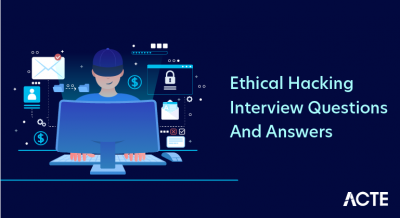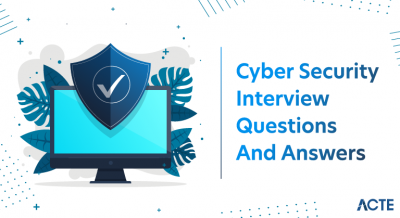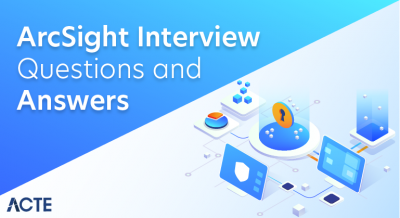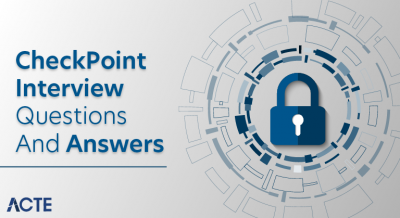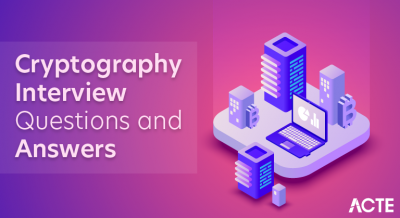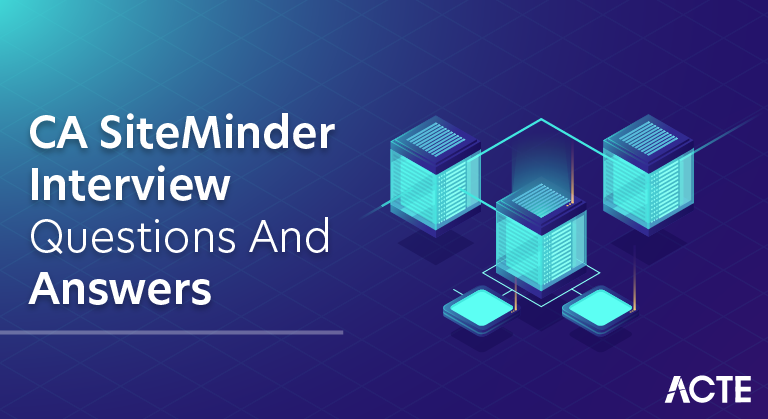
These CA Siteminder interview questions are carefully crafted to familiarize you with the types of questions you might encounter in your CA Siteminder interview. In my experience, skilled interviewers often begin with fundamental concepts before delving into more advanced discussions based on your responses. This set of top CA Siteminder interview questions includes detailed answers, encompassing scenario-based inquiries, questions suitable for freshers entering the field, as well as those tailored for experienced professionals.
1.What is CA Siteminder?
Ans:
- CA Siteminder is a strong access management solution that is designed to handle the security issues associated with online applications.
- It specializes in secure single sign-on (SSO), identity federation, and access control and offers a broad array of functionality.
- Its major purpose is to automate user authentication and authorization procedures, resulting in a consistent and secure user experience across numerous apps.
2. How does Siteminder ensure secure single sign-on?
Ans:
- Siteminder ensures secure single sign-on by employing a mechanism that authenticates users once, granting them access to various applications without the need for repeated login credentials.
- This capability not only improves user comfort but also greatly adds to the overall security posture by lowering the risk of unauthorized access and enhancing user compliance with security regulations.
3. What is Policy Server in CA Siteminder?
Ans:
- At the core of CA Siteminder is the Policy Server, a central component that plays a pivotal role in enforcing access policies, authentication, and authorization decisions.
- The Policy Server acts as a gatekeeper, determining which users have the necessary permissions to access specific resources based on predefined policies and rules, thus ensuring a robust and controlled security environment.
4. Explain the concept of Policy Objects.
Ans:
- Policy Objects within CA Siteminder are fundamental elements that define the rules and conditions governing access to resources.
- These objects encapsulate the criteria for granting or denying access based on a user’s attributes, roles, and other contextual factors. By configuring Policy Objects, administrators can finely tune the access control mechanisms to align with the organization’s security policies and requirements.
5. What is a Web Agent in CA Siteminder?
Ans:
- A crucial component of the CA Siteminder architecture is the Web Agent, which is strategically deployed on web servers.
- Acting as a traffic interceptor, the Web Agent intercepts incoming requests and enforces access policies dictated by the Policy Server.
- This distributed approach ensures that access control is applied consistently across various web applications, enhancing security at the point of entry.
6. How does CA Siteminder handle authentication?
Ans:
- CA Siteminder approaches authentication in a flexible manner, offering a variety of techniques such as classic username/password login, multi factor authentication, and interaction with other identity suppliers.
- This adaptability enables organizations to select the authentication systems that best meet their security requirements, resulting in a strong defense against unauthorized access attempts.
7. What is Federation in CA Siteminder?
Ans:
- Federation in CA Siteminder plays a pivotal role in facilitating secure collaboration and resource sharing between trusted partners.
- This feature enables the seamless exchange of identity and authentication information, allowing users to access resources in a federated environment without the need for redundant authentication processes.
- Federation thus streamlines access across diverse applications and domains, enhancing user experience and interoperability.
8. Explain the importance of Session Management in Siteminder.
Ans:
- Session Management within CA Siteminder is a critical aspect that oversees the tracking and maintenance of user sessions.
- This functionality ensures the secure and uninterrupted flow of user interactions by managing session timeouts, renewals, and logout processes.
- Effective Session Management not only enhances security by preventing unauthorized access but also contributes to a smooth and reliable user experience across various applications.
9. How does CA Siteminder handle authorization?
Ans:
CA Siteminder handles authorization through policies and rules defined in Policy Objects. These policies determine user access rights based on attributes like roles, groups, and resource-specific conditions, ensuring a granular and secure approach to access control.
10. What is the purpose of the Siteminder Agent Configuration Object?
Ans:
The Siteminder Agent Configuration Object defines Web Agent settings, such as communication parameters with the Policy Server and other operational settings. It is critical to the correct operation and integration of Web Agents inside the Siteminder environment.
11. How does Siteminder support multi-factor authentication (MFA)?
Ans:
Siteminder supports multi-factor authentication by interacting with MFA providers. This improves security by forcing users to submit various kinds of verification before getting access, offering an extra layer of protection against unauthorized entrance.
12. Explain the concept of Realm in CA Siteminder.
Ans:
A Realm in Siteminder defines a security domain, organizing policies, users, and resources within a specific scope. Realms help in structuring and managing the access control landscape, providing a logical and hierarchical framework for policy enforcement.
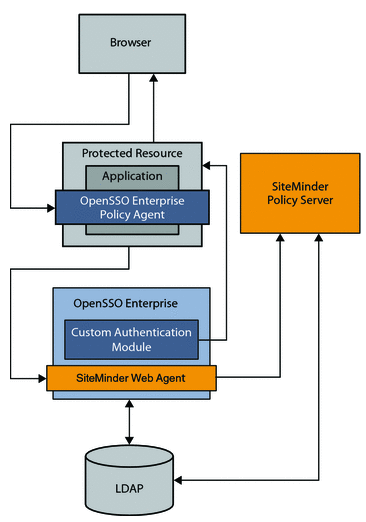
13. What is the role of the Siteminder Administrative UI?
Ans:
The Siteminder Administrative UI serves as a graphical interface for administrators to configure, manage, and monitor CA Siteminder components and policies. It provides an intuitive platform for efficient administration and oversight of the access management system.
14. How does Siteminder handle user directory integration?
Ans:
Siteminder integrates with various user directories, such as LDAP or Active Directory, to authenticate users and retrieve attribute information during access decisions. This integration ensures seamless user management and access control based on directory-defined attributes.
15. Differentiate between an Agent and a Policy Server in CA Siteminder.
Ans:
| Aspect | Agent | Policy Server | |
| Function |
Handles request interception and communication with the web/application server. |
Manages authentication, authorization, and policy enforcement. | |
| Installation Location | Installed on the web/application server. | Installed centrally as a standalone server. | |
| Responsibilities | Intercepts user requests. | Makes access control decisions. | |
| Typical Use Cases |
Protecting web resources. |
Centralized management of access policies across multiple applications and servers. |
16. How does Siteminder address security threats like session hijacking?
Ans:
Siteminder addresses security threats like session hijacking through mechanisms such as secure session cookies. These cookies, coupled with advanced session assurance features, help mitigate risks by validating session integrity and detecting anomalies in user behavior.
17. Explain the role of the Siteminder Access Gateway.
Ans:
The Siteminder Access Gateway extends Siteminder’s capabilities to protect and manage access for applications beyond the traditional web environment. It provides secure access control for APIs, mobile apps, and other non-web resources, ensuring a comprehensive security approach.
18. How does Siteminder handle policy enforcement for mobile applications?
Ans:
Siteminder handles policy enforcement for mobile applications through its agents, offering secure access control and SSO capabilities for users accessing resources via mobile devices. This extends the robust access management features to the mobile landscape.
19. What is the significance of the Siteminder Policy Server Key Store?
Ans:
The Siteminder Policy Server Key Store holds encryption keys and certificates, ensuring secure communication between Siteminder components. This secure key management enhances overall system security by safeguarding sensitive cryptographic material.
20. How does Siteminder support cloud-based applications?
Ans:
Siteminder supports cloud-based applications by integrating with them, providing secure access management and SSO capabilities for users accessing resources in the cloud. This facilitates a seamless and secure user experience across on-premises and cloud environments.
21. Explain the role of the Siteminder Web Services Security (WSS) Framework.
Ans:
- The Siteminder Web Services Security (WSS) Framework extends security services to web services, ensuring authentication, authorization, and secure communication within service-oriented architectures.
- It enables a consistent security approach for web services in the Siteminder ecosystem.
22. What is the purpose of the Siteminder Audit Store?
Ans:
- The Siteminder Audit Store serves as a repository for logging and storing security-related events.
- It provides a comprehensive record of system activities, facilitating compliance, monitoring, and forensic analysis to ensure adherence to security policies and regulatory requirements.
23. How does Siteminder handle user self-service and password management?
Ans:
- Siteminder can integrate with user self-service and password management solutions.
- This integration allows users to reset passwords and manage their accounts securely, reducing the administrative burden on support teams and enhancing user autonomy.
24. What are Siteminder Response and Rule Objects used for?
Ans:
- Response and Rule Objects in Siteminder are used to define actions taken based on policy enforcement outcomes.
- These objects enable administrators to customize the system’s behavior, specifying responses to various scenarios to ensure effective access control.
25. How does Siteminder provide high availability and scalability?
Ans:
- Siteminder ensures high availability and scalability through features like clustering and load balancing.
- These mechanisms distribute the workload across multiple servers, ensuring reliable access management even in large and dynamic environments.
26. Explain the role of the Siteminder Session Assurance feature.
Ans:
- Siteminder ensures high availability and scalability through features like clustering and load balancing.
- These mechanisms distribute the workload across multiple servers, ensuring reliable access management even in large and dynamic environments.
27. How does Siteminder handle Single Logout (SLO)?
Ans:
Siteminder supports Single Logout (SLO), a mechanism that ensures logging out from one application and also logs the user out from other connected applications in the SSO environment. This feature contributes to a consistent and secure logout experience across the entire system.
28. What is the process for upgrading a Siteminder deployment?
Ans:
Upgrading a Siteminder deployment involves a comprehensive process of planning, testing, and executing the upgrade. This may include updating software, configurations, and ensuring compatibility with existing components. The goal is to seamlessly transition to newer versions while maintaining system integrity.
29. How does Siteminder assist in regulatory compliance?
Ans:
- Siteminder plays a crucial role in assisting organizations with regulatory compliance.
- By providing robust access controls, audit trails, and security measures, it helps organizations meet industry-specific standards and comply with regulatory requirements, ensuring a secure and compliant access management environment.
30. What are the common challenges in implementing and maintaining CA Siteminder?
Ans:
- Common challenges in implementing and maintaining CA Siteminder include the complexity of policy management, integration with diverse IT environments, and the need for ongoing system updates to address evolving security threats.
- Additionally, regular training for administrators is essential to ensure effective deployment and operation of the Siteminder solution.
31. What is the purpose of Siteminder Access Gateway?
Ans:
- Extends to non-web resources.
- Enables secure API access.
- Provides comprehensive security.
- Ensures uniform policy enforcement.
- Facilitates secure resource integration.
32. How does Siteminder handle mobile application security?
Ans:
- Enforces policies via agents.
- Supports secure mobile access.
- Facilitates seamless SSO.
- Integrates with MFA solutions.
- Enhances protection against unauthorized entry.
33. What is the role of a Cookie Provider in Siteminder?
Ans:
- Generates secure session cookies.
- Essential for seamless SSO.
- Maintains persistent sessions.
- Supports secure user authentication.
- Enables secure cross-application navigation.
34. How does Siteminder address session hijacking?
Ans:
- Utilizes secure session cookies.
- Employs session assurance features.
- Enhances security with anomaly detection.
- Ensures integrity of user sessions.
- Mitigates risks associated with session-based attacks.
35. What is the significance of the Siteminder Audit Store?
Ans:
- Serves as a repository for security events.
- Facilitates regulatory compliance.
- Supports forensic analysis.
- Enhances monitoring capabilities.
- Provides a comprehensive audit trail.
36. How does Siteminder support cloud-based applications?
Ans:
- Integrates for secure cloud access.
- Enables seamless SSO in the cloud.
- Adapts to diverse cloud app environments.
- Enhances security for cloud resources.
- Facilitates consistent user experience across cloud and on-premises.
37. What is the purpose of the Siteminder Policy Server Key Store?
Ans:
- Stores encryption keys and certificates securely.
- Ensures confidential communication between components.
- Safeguards sensitive cryptographic material.
- Enhances overall system security.
- Facilitates secure key management practices.
38. How does Siteminder ensure high availability?
Ans:
- Supports clustering for load balancing.
- Ensures reliable access management.
- Enhances scalability for growing demands.
- Provides fault tolerance in distributed environments.
- Enables continuous service availability.
39. What is the Siteminder Web Services Security (WSS) Framework?
Ans:
- Extends security services to web services.
- Ensures secure authentication for APIs.
- Facilitates authorization within service-oriented architectures.
- Enhances overall API security.
- Adapts Siteminder capabilities to web service environments.
40. How does Siteminder handle Single Logout (SLO)?
Ans:
- Supports Single Logout mechanism.
- Ensures consistent and secure logout.
- Facilitates streamlined user sessions.
- Enhances overall SSO experience.
- Provides a unified logout process across connected applications.
41. What is the role of the Siteminder Session Assurance feature?
Ans:
- Validates session integrity.
- Detects anomalies in user behavior.
- Enhances security against session-based attacks.
- Ensures trustworthy user sessions.
- Contributes to a secure and reliable user experience.
42. How does Siteminder integrate with user directories?
Ans:
- Integrates seamlessly with LDAP, Active Directory, etc.
- Retrieves user attributes for access decisions.
- Facilitates centralized user management.
- Enables consistent access control based on directory-defined attributes.
- Enhances security by leveraging existing user directory infrastructure.
43. What is the purpose of the Siteminder Administrative UI?
Ans:
- Provides an intuitive graphical interface.
- Facilitates efficient configuration and management.
- Streamlines administrative tasks.
- Enhances user experience for administrators.
- Allows quick monitoring of Siteminder components and policies.
44. How does Siteminder handle user self-service and password management?
Ans:
- Integrates with self-service solutions.
- Allows users to securely reset passwords.
- Reduces administrative burden on support teams.
- Enhances user autonomy and convenience.
- Facilitates secure account management for end-users.
45. What are Response and Rule Objects in Siteminder used for?
Ans:
- Define actions based on policy outcomes.
- Customize system behavior for effective access control.
- Specify responses to various scenarios.
- Enable granular control over access decisions.
- Enhance flexibility in shaping policy enforcement outcomes.
46. How does Siteminder handle authorization?
Ans:
- Utilizes policies and rules for access decisions.
- Determines user access rights based on attributes.
- Supports granular and role-based access control.
- Ensures precise enforcement of access policies.
- Facilitates dynamic authorization based on changing user attributes.
47. What is the purpose of the Siteminder Agent Configuration Object?
Ans:
- Specifies settings for Web Agents.
- Defines communication parameters with the Policy Server.
- Ensures proper integration and communication.
- Facilitates customization of agent behavior.
- Enhances the configurability of Siteminder components.
48. How does Siteminder address security threats during authentication?
Ans:
- Supports multifactor authentication (MFA).
- Integrates with various authentication methods.
- Enhances security by requiring multiple forms of user verification.
- Provides flexibility to adapt to evolving authentication standards.
- Mitigates risks associated with compromised credentials.
49. What role does Federation play in Siteminder?
Ans:
- Facilitates secure sharing of identity information.
- Enables seamless access to resources in federated environments.
- Supports interoperability between trusted partners.
- Enhances user experience by eliminating redundant authentication.
- Streamlines resource access in a collaborative and federated ecosystem.
50. How does Siteminder support multi-factor authentication?
Ans:
- Integrates with MFA solutions.
- Enhances security with multiple forms of user verification.
- Facilitates the implementation of layered authentication mechanisms.
- Provides an extra layer of protection against unauthorized access.
- Supports a flexible and adaptive approach to authentication.
51. What is the role of Realms in Siteminder?
Ans:
- Defines security domains.
- Organizes policies, users, and resources within specific scopes.
- Provides a hierarchical framework for access control.
- Enhances the logical structuring of the Siteminder environment.
- Facilitates effective organization and management of access policies.
52. How does Siteminder handle policy enforcement for APIs?
Ans:
- Utilizes Siteminder Access Gateway.
- Ensures secure access control for diverse resources.
- Facilitates uniform policy enforcement for APIs.
- Provides a consistent security approach across different resource types.
- Enhances protection for API endpoints and associated data.
53. What is the purpose of Session Management in Siteminder?
Ans:
- Tracks and maintains user sessions securely.
- Manages session timeouts, renewals, and logout processes.
- Ensures the secure and uninterrupted flow of user interactions.
- Enhances security by preventing unauthorized access.
- Contributes to a smooth and reliable user experience across applications.
54. How does Siteminder handle authentication for cloud-based applications?
Ans:
- Integrates with cloud-based applications.
- Ensures secure access management and authentication.
- Facilitates a seamless and secure user experience in the cloud.
- Enhances overall security for users accessing resources in the cloud.
55. What is the role of the Siteminder Access Gateway in API security?
Ans:
- Extends Siteminder capabilities to non-web resources.
- Ensures secure access control for API endpoints.
- Facilitates a consistent and comprehensive security approach.
- Enhances protection for APIs and associated data.
- Provides a centralized point for securing diverse resources beyond the web.
56. How does Siteminder provide scalability?
Ans:
- Supports clustering for load balancing.
- Ensures reliable access management in large environments.
- Enhances scalability for growing user demands.
- Distributes the workload across multiple servers.
- Enables seamless expansion to accommodate increased user loads.
57. What is the process for upgrading a Siteminder deployment?
Ans:
- Involves planning, testing, and execution.
- Includes updating software and configurations.
- Ensures compatibility with existing components.
- Facilitates a seamless transition to newer versions.
- Incorporates best practices for minimizing downtime during upgrades.
58. How does Siteminder contribute to regulatory compliance?
Ans:
- Provides robust access controls and audit trails.
- Assists organizations in meeting industry-specific standards.
- Facilitates compliance with regulatory requirements.
- Enhances transparency and accountability in access management.
- Supports organizations in demonstrating adherence to security standards.
59. What challenges are common in implementing Siteminder?
Ans:
- Complexity of policy management.
- Integration with diverse IT environments.
- Ongoing system updates for evolving threats.
- Requirement for regular administrator training.
- Ensuring alignment with organizational security policies.
60. How does Siteminder handle policy enforcement for non-web resources?
Ans:
- Utilizes Siteminder Access Gateway.
- Ensures secure access control for diverse resources.
- Facilitates consistent policy enforcement beyond the web.
- Enhances security for various non-web applications.
- Provides a unified approach to access management for diverse resource types.
61. How does CA Siteminder handle dynamic policy updates in high-traffic scenarios?
Ans:
- In high-traffic environments, CA Siteminder ensures dynamic policy updates by utilizing a distributed and scalable architecture.
- The Policy Server employs caching mechanisms and a distributed session store to minimize the impact of updates on performance.
- Policies are dynamically updated across the infrastructure, ensuring real-time enforcement without compromising system responsiveness.
- This method allows organizations to easily react to new security needs while maintaining effective and continuous access management.
62. Explain the role of Siteminder Contexts in access control.
Ans:
- Siteminder Contexts play a crucial role in access control by providing a mechanism to organize and segregate policies based on specific criteria.
- These criteria can include user attributes, resource types, or application contexts.
- By structuring policies within contexts, administrators can achieve a granular level of control, tailoring access rules to specific scenarios.
- This flexibility not only enhances the precision of access management but also simplifies policy administration, making it easier to maintain and adapt to evolving security needs.
63. How does Siteminder mitigate the impact of session replay attacks?
Ans:
- Siteminder employs advanced security measures to mitigate the impact of session replay attacks.
- The use of secure session cookies, coupled with features like session assurance, helps verify the integrity of user sessions.
- Additionally, Siteminder employs anti-replay mechanisms that detect and prevent the reuse of intercepted session information.
- This multi-layered approach ensures that even if session data is compromised, attempts to replay the information are thwarted, maintaining the confidentiality and security of user sessions.
64. How does Siteminder address access policy conflicts and prioritize them?
Ans:
- Siteminder addresses access policy conflicts through a prioritization mechanism.
- Each policy is assigned a priority level, and in case of conflicts, the policy with the highest priority takes precedence.
- This allows administrators to establish a clear order of precedence for policies, ensuring that access decisions align with organizational priorities.
- Additionally, Siteminder provides tools for administrators to analyze and resolve conflicts effectively, maintaining a robust and well-ordered access control environment.
65. How does Siteminder integrate with (IGA) systems?
Ans:
- Siteminder integrates seamlessly with identity governance and administration (IGA) systems to enhance overall identity management capabilities.
- Through standardized protocols like SCIM (System for Cross-domain Identity Management), Siteminder synchronizes user identities and attributes with IGA systems, streamlining user provisioning, de-provisioning, and attribute management.
- This integration ensures that access policies in Siteminder are aligned with the authoritative identity information managed by IGA systems, contributing to a unified and well-governed identity ecosystem.
66. Explaion about Siteminder’s secure inter-component communication mechanisms.
Ans:
- Secure inter-component communication in Siteminder is facilitated through the use of encrypted channels and a robust key management system.
- The Policy Server and other components exchange information over secure channels using industry-standard encryption protocols.
- The Policy Server Key Store securely manages encryption keys and certificates, ensuring the confidentiality and integrity of communication between Siteminder components.
- This meticulous approach to secure communication safeguards sensitive information and reinforces the overall security posture of the Siteminder environment.
67. How does Siteminder manage policy versioning and rollback in case of errors?
Ans:
- Siteminder incorporates a comprehensive policy versioning and rollback mechanism to manage changes effectively.
- Each modification to policies is versioned, allowing administrators to track and review alterations.
- In the event of errors or undesired changes, administrators can initiate a rollback to a previous version, restoring the policies to a known and stable state.
- This not only mitigates the impact of errors but also provides a safety net for policy management, ensuring the integrity and consistency of access control configurations.
68. Explain the role of Siteminder Policy Store in a multi-environment deployment.
Ans:
- In a multi-environment deployment, the Siteminder Policy Store serves as a centralized repository for storing access policies, configurations, and related information.
- This shared Policy Store ensures consistency across multiple Siteminder instances, facilitating centralized policy administration.
- Changes made in one environment can be propagated to others, streamlining policy management and reducing the risk of inconsistencies.
- The Policy Store, therefore, acts as a pivotal component in maintaining coherence and coordination within diverse Siteminder deployments.
69. How does Siteminder handle access delegation and privilege escalation scenarios?
Ans:
- Siteminder incorporates a robust access delegation model to manage scenarios of access delegation and privilege escalation.
- Administrators can define delegation rules within policies, allowing users to delegate access rights to others based on predefined criteria.
- Privilege escalation is controlled through granular policy settings, ensuring that users can only escalate privileges within specified bounds.
- This approach provides flexibility for organizations to delegate access responsibly while maintaining control over privilege levels, contributing to a secure and well-managed access environment.
70. How does it protect against XML-based attacks in web applications?
Ans:
- Siteminder protects against XML-based attacks in web applications by implementing security controls that validate and sanitize XML input.
- The Web Agent intercepts and analyzes XML requests, ensuring that they adhere to a predefined schema and contain no malicious content.
- Additionally, Siteminder can enforce XML security policies to prevent common attacks like XML injection and schema poisoning.
- By incorporating these measures, Siteminder contributes to the overall security of web applications, safeguarding against potential XML-based vulnerabilities.
71. How does Siteminder facilitate adaptive authentication based on contextual factors?
Ans:
- Siteminder supports adaptive authentication by considering contextual factors in access decisions.
- Contextual information such as user location, device characteristics, and time of access can influence authentication requirements.
- Policies within Siteminder can be configured to dynamically adjust authentication levels based on these factors.
- For example, if a user attempts to access sensitive data from an unfamiliar location, Siteminder may prompt for additional authentication measures.
- This adaptive approach enhances security by tailoring authentication to the specific context of each access attempt, mitigating risks associated with varying threat landscapes.
72. Explain about Siteminder’s integration with threat intelligence for security.
Ans:
- Siteminder integrates with threat intelligence platforms to bolster proactive security measures.
- By leveraging threat intelligence feeds, Siteminder enriches its access policies with real-time information about known threats and malicious entities.
- This integration enables Siteminder to make informed access decisions by considering the current threat landscape.
- In case of policy violations associated with recognized threats, Siteminder can trigger adaptive responses or alerts.
- This collaboration with threat intelligence platforms enhances the ability of Siteminder to preemptively address security risks and fortify the overall resilience of the access management environment.
73. How does Siteminder contribute to a zero-trust security model?
Ans:
- Siteminder aligns with the principles of a zero-trust security model by implementing stringent access controls and continuous verification mechanisms.
- Rather than relying solely on network perimeters, Siteminder ensures that access decisions are based on user identity, context, and device attributes.
- Policies can be configured to enforce the principle of least privilege, limiting access to only what is necessary.
- Additionally, Siteminder’s integration with identity verification technologies supports continuous authentication, enhancing security in dynamic and evolving threat scenarios characteristic of a zero-trust model.
74. Explain Siteminder’s approach to securing microservices architectures.
Ans:
- Siteminder secures microservices architectures by extending its capabilities to protect APIs and microservices.
- The Siteminder Access Gateway is instrumental in providing secure access control to non-web resources, including microservices.
- Through policies configured specifically for microservices, Siteminder enforces granular access rules, ensuring that only authorized entities can interact with these services.
- Additionally, Siteminder supports OAuth and JWT-based authentication mechanisms, aligning with modern microservices security practices.
- This approach empowers organizations to seamlessly integrate Siteminder into microservices environments while maintaining robust and scalable security.
75. How does Siteminder secure IoT devices accessing enterprise resources?
Ans:
- Siteminder tackles the challenges of securing IoT devices accessing enterprise resources by incorporating adaptive authentication and device profiling.
- Policies within Siteminder can dynamically adjust authentication requirements based on device attributes and user behavior.
- Device profiling capabilities enable Siteminder to recognize and categorize IoT devices, allowing administrators to define specific access rules.
- By integrating with IoT security frameworks, Siteminder enhances the overall security posture, ensuring that access from IoT devices aligns with organizational policies and mitigates the unique risks associated with IoT environments.
76. Explain about Siteminder’s role in securing containerized apps in Kubernetes.
Ans:
- Siteminder plays a vital role in securing containerized applications within a Kubernetes environment by extending its access management capabilities to these dynamic and orchestrated workloads.
- Through integration with Kubernetes API and authentication mechanisms, Siteminder ensures that only authorized entities can interact with containerized applications.
- Policies can be tailored to the specifics of containerized environments, providing granular control over access to resources.
- Siteminder’s ability to adapt to the fluid nature of containers enhances security in dynamic and rapidly changing deployment scenarios, contributing to a robust defense against potential threats.
77. How does Siteminder manage access with ephemeral identities in the cloud?
Ans:
- Siteminder addresses access challenges posed by transient or ephemeral identities in cloud environments by integrating with cloud identity providers and supporting standardized protocols like OAuth.
- This integration allows Siteminder to dynamically manage access based on cloud-based identity information.
- Policies can be configured to adapt to the lifecycle of ephemeral identities, ensuring that access permissions are aligned with the transient nature of these entities.
- Siteminder’s flexibility in handling diverse identity scenarios enhances its effectiveness in securing access in dynamic cloud environments.
78. Explain the role of Siteminder in supporting passwordless authentication methods.
Ans:
- Siteminder actively supports passwordless authentication methods by integrating with modern authentication frameworks such as FIDO2 and WebAuthn.
- These standards enable the use of alternative authentication factors like biometrics or cryptographic keys, eliminating the reliance on traditional passwords.
- Policies within Siteminder can be configured to enforce passwordless authentication for specific users or scenarios.
- By embracing passwordless methods, Siteminder contributes to enhanced security, reduced reliance on easily compromised credentials, and improved user experience in accessing protected resources.
79. How does Siteminder assist organizations in achieving a unified (IAM) strategy?
Ans:
- Siteminder assists organizations in achieving a unified IAM strategy by providing a centralized and comprehensive solution for access management.
- Through integration with identity directories, Siteminder ensures alignment with authoritative identity information.
- Policies are configured to enforce consistent access rules across diverse applications and resources.
- Siteminder’s support for federated identity and single sign-on further contributes to a unified IAM approach, allowing users seamless access to resources across interconnected systems.
- This cohesive strategy simplifies administration, enhances security, and ensures a seamless user experience in complex and interconnected IT environments.
80. How does Siteminder secure access to data lakes and big data?
Ans:
- Siteminder secures access to data lakes and big data environments by extending its access control capabilities to these data-centric ecosystems.
- Through integration with data lake platforms and big data frameworks, Siteminder enforces policies that govern access to sensitive data. Granular controls can be applied based on user attributes and contextual information.
- By adapting to the unique challenges of big data environments, Siteminder provides a robust solution for securing access to valuable and sensitive data assets.
81. How does Siteminder handle user session persistence across multiple applications?
Ans:
- Utilizes secure session cookies.
- Enables Single Sign-On (SSO) capabilities.
- Maintains persistent sessions.
- Supports session sharing across applications.
- Enhances user experience with seamless navigation.
82. What is the significance of Siteminder Web Agents in the access management architecture?
Ans:
- Enforces policies at the web server level.
- Intercepts and evaluates HTTP requests.
- Communicates with the Policy Server for decisions.
- Essential for securing web applications.
- Facilitates fine-grained access control.
83. How does Siteminder handle authentication for RESTful APIs?
Ans:
- Supports OAuth and JWT authentication.
- Enforces access policies for API endpoints.
- Integrates with API Gateway solutions.
- Ensures secure communication with APIs.
- Facilitates access control for RESTful services.
84. Explain about Siteminder Policy Server Key Store role in secure communication?
Ans:
- Stores encryption keys and certificates.
- Ensures secure communication channels.
- Safeguards sensitive cryptographic material.
- Enhances overall system security.
- Supports secure key management practices.
85. How does Siteminder contribute to preventing brute-force attacks on user accounts?
Ans:
- Implements account lockout policies.
- Supports CAPTCHA and challenge-response.
- Utilizes adaptive authentication measures.
- Integrates with threat intelligence for monitoring.
- Enhances security against unauthorized access attempts.
86. What is the purpose of Siteminder Access Control Rules in policy enforcement?
Ans:
- Define conditions for access decisions.
- Specify criteria based on user attributes.
- Facilitate granular control over resources.
- Enable dynamic policy enforcement.
- Contribute to fine-tuned access management.
87. Explain about Siteminder’s approach to securing legacy apps with diverse authentication?
Ans:
- Integrates with various legacy authentication systems.
- Provides a unified access layer for legacy apps.
- Supports multi-factor authentication (MFA).
- Ensures consistent security across applications.
- Enables phased migration to modern authentication.
88. Explain Siteminder’s approach to secure session termination and logout procedures.
Ans:
- Supports Single Logout (SLO) mechanism.
- Ensures consistent and secure logout.
- Terminates sessions across connected applications.
- Facilitates a streamlined user logout experience.
- Enhances security by preventing session hijacking.
89. How does Siteminder assist in compliance with data protection regulations such as GDPR?
Ans:
- Provides robust access controls.
- Maintains detailed audit trails.
- Supports data anonymization and pseudonymization.
- Ensures user consent management.
- Facilitates compliance with GDPR data access requirements.
90. What role does the Siteminder Policy Store play in policy administration and distribution?
Ans:
- Centralized repository for access policies.
- Facilitates policy administration and configuration.
- Ensures consistency across multiple environments.
- Supports versioning and rollback mechanisms.
- Enables efficient distribution of policies across components.
91. How does Siteminder handle access challenges in geographically distributed environments?
Ans:
- Supports clustering for load balancing.
- Ensures reliable access management.
- Facilitates low-latency access decisions.
- Enhances scalability for distributed setups.
- Provides fault tolerance for geographical diversity.
92. Explain the impact of Siteminder on application performance and latency.
Ans:
- Utilizes caching mechanisms for performance.
- Implements efficient policy evaluation.
- Minimizes impact on application response times.
- Ensures scalable access management.
- Enhances overall user experience with optimized performance.
93. How does Siteminder handle access policies for third-party applications and APIs?
Ans:
- Integrates with third-party application environments.
- Supports OAuth and OpenID Connect for APIs.
- Enforces access controls based on predefined policies.
- Enables secure collaboration with external entities.
- Facilitates consistent policy enforcement across ecosystems.
94. What secure communication between the Policy Server and Web Agents?
Ans:
- Utilizes industry-standard encryption protocols.
- Implements secure channels for communication.
- Safeguards against interception and tampering.
- Enhances confidentiality of information exchange.
- Supports mutual authentication for added security.
95. Explain architecture’s adaptability to microservices and containerized environments.
Ans:
- Extends access control to microservices through Siteminder Access Gateway.
- Enforces granular policies for containerized applications.
- Integrates with Kubernetes for orchestrated security.
- Supports OAuth and JWT for securing microservices.
- Ensures seamless adaptability to dynamic and modern deployment architectures.
96. What is a Cookie Provider in Siteminder?
Ans:
A Cookie Provider in Siteminder generates and manages secure session cookies. These cookies are integral to the SSO mechanism, allowing users to navigate seamlessly across multiple applications while maintaining a secure and persistent session.


